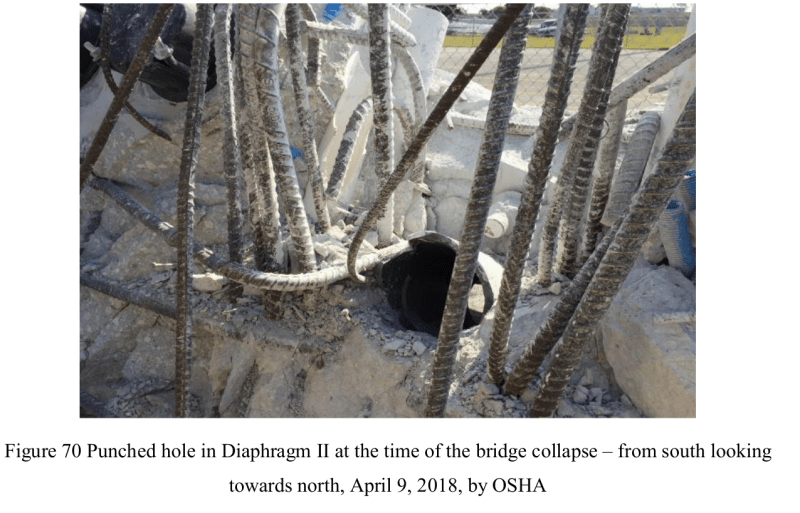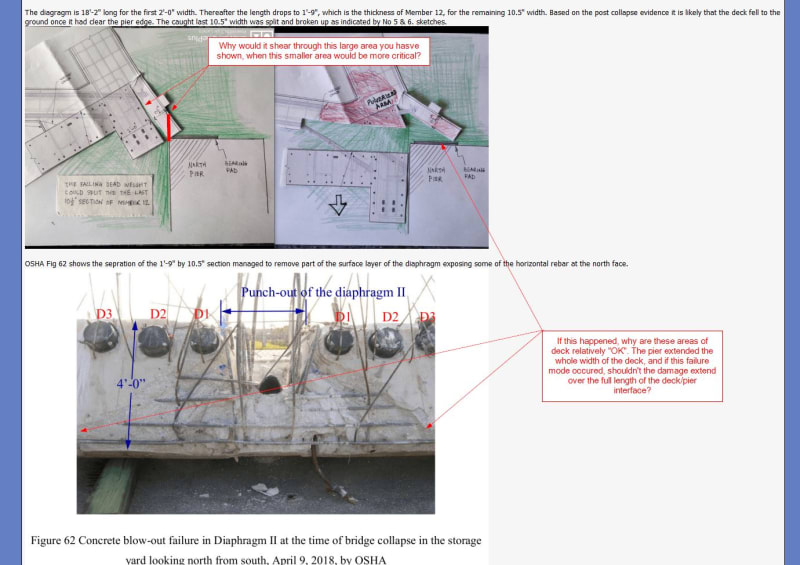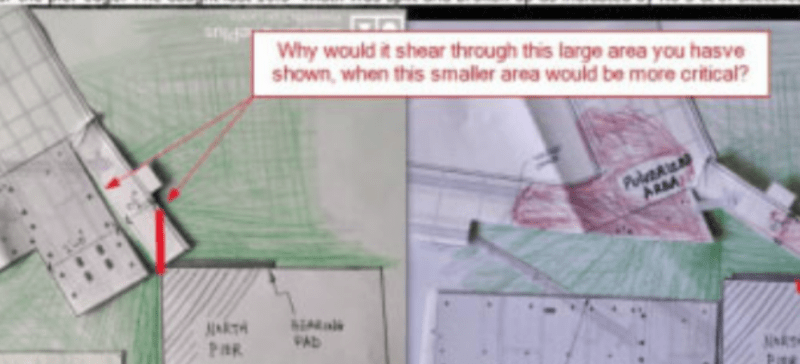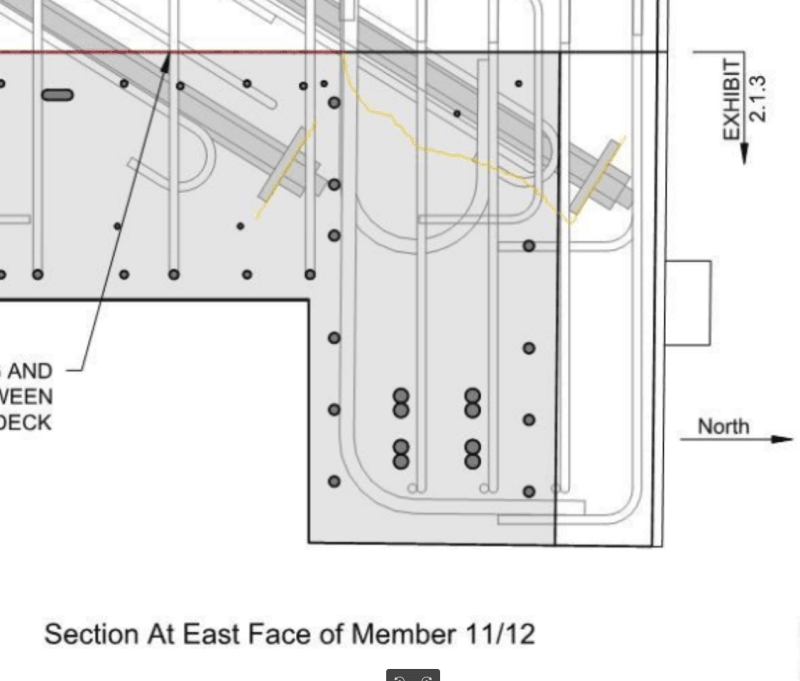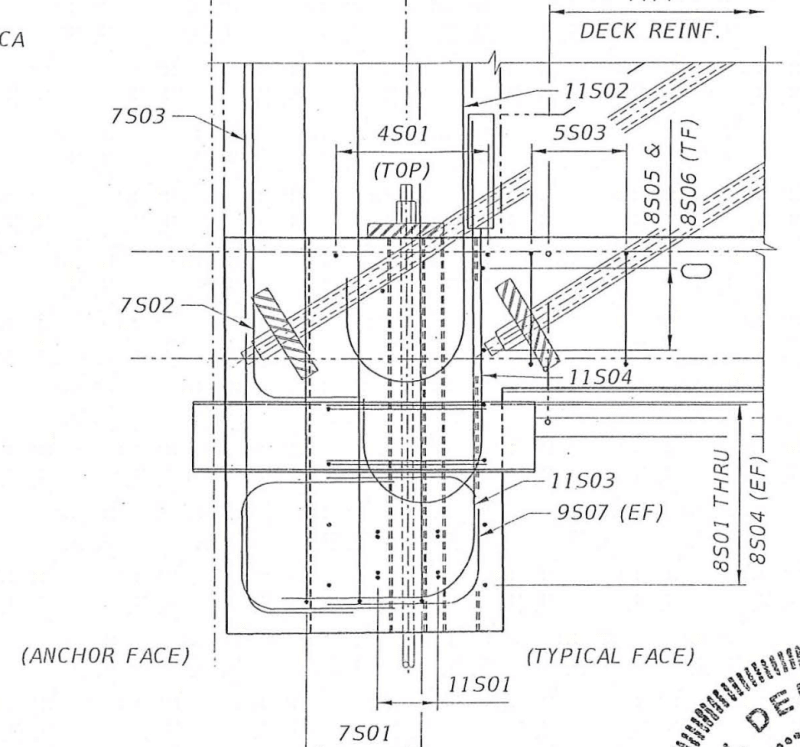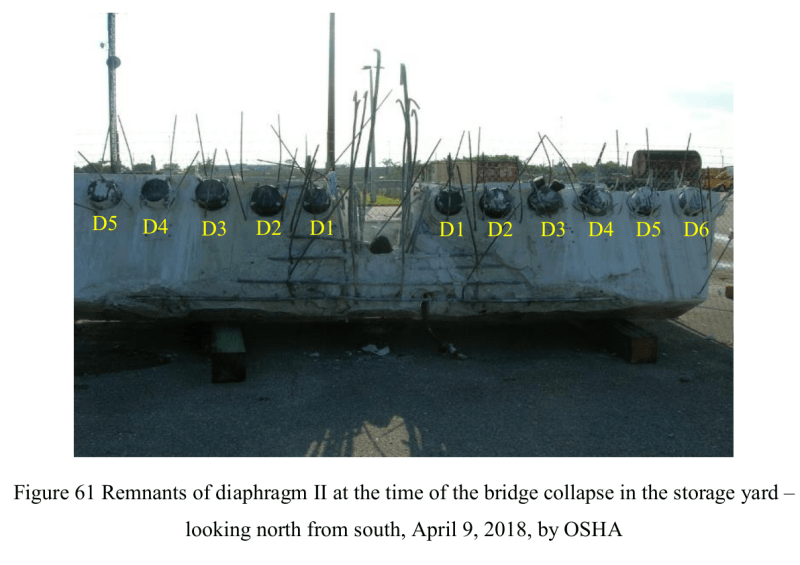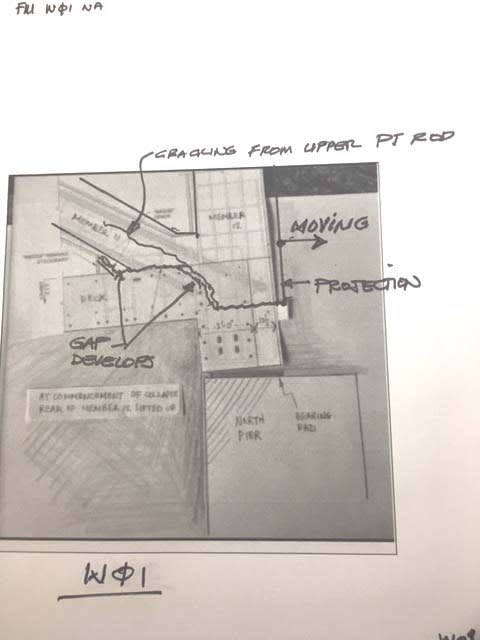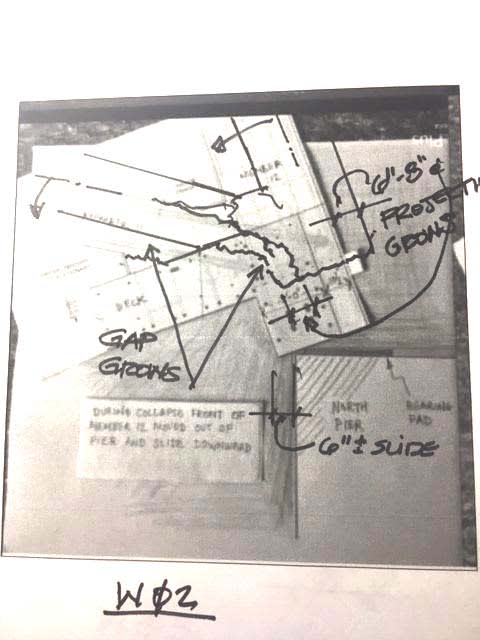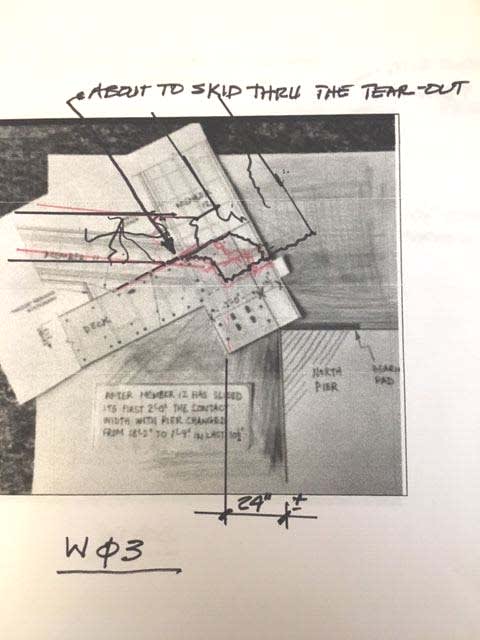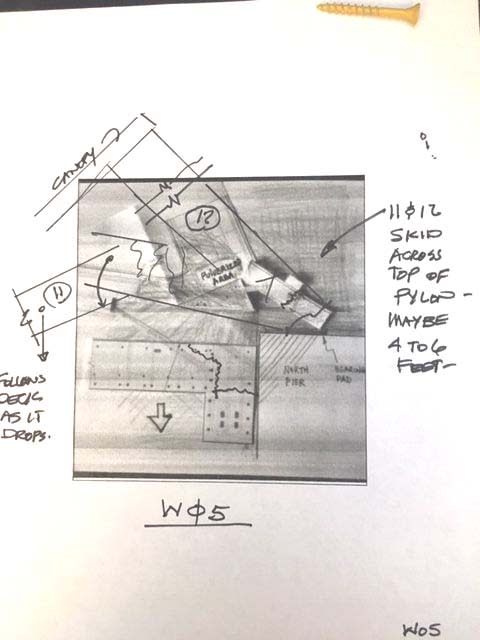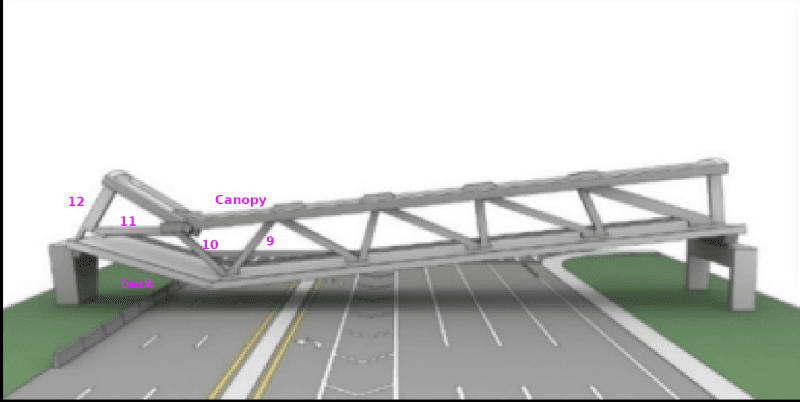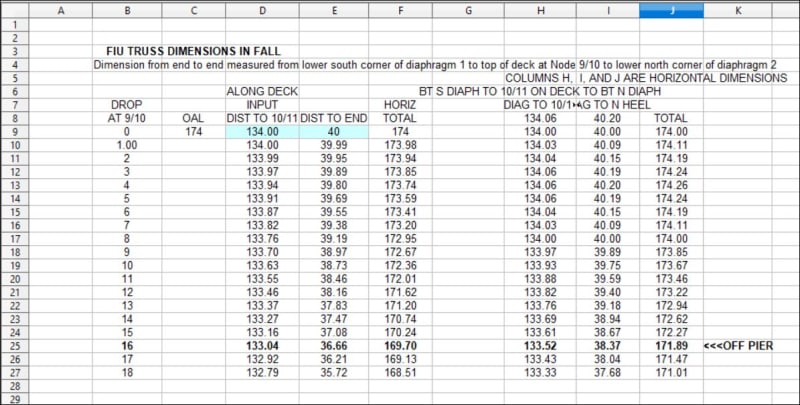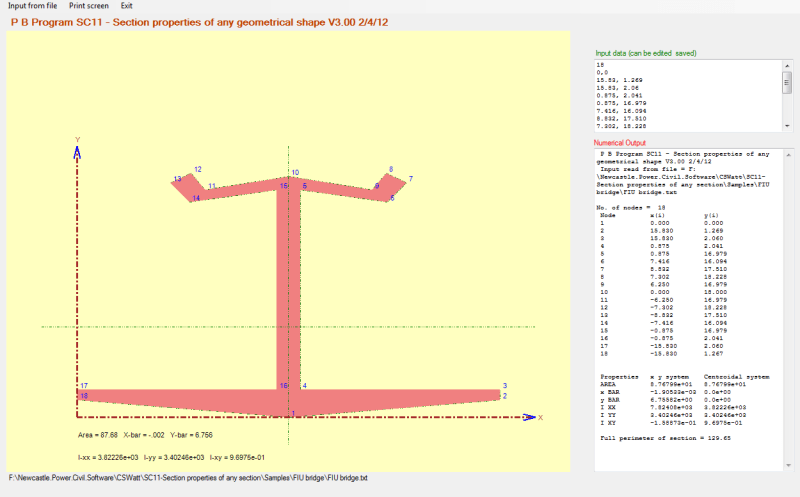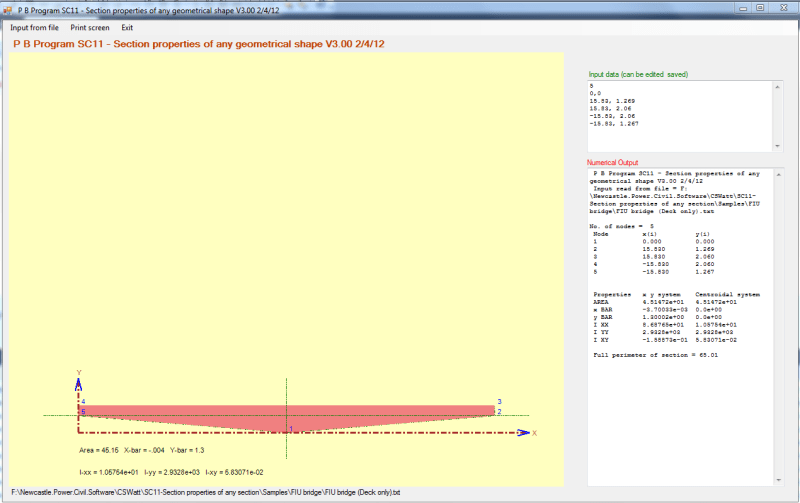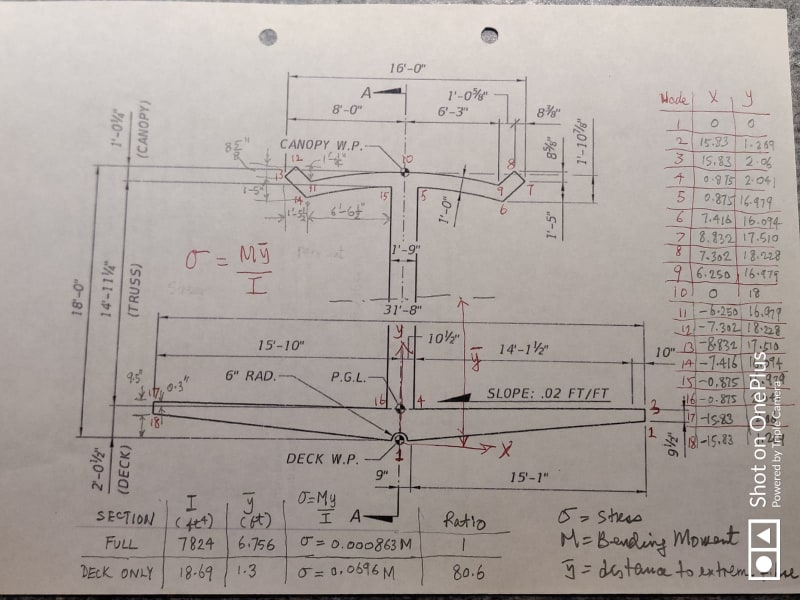Sorry.
Totally wrong.
There are two triangles involved.
Triangle one is formed by member 11, member 12, and the canopy.
Triangle two is formed by member 11, member 10, and the deck.
When the collapse starts, the base of the second triangle starts to elongate.
Your sketch doesn't show this.
As the structure starts to fall, member 11 is pushed further out, hinging at the canopy.
Member 11 will continue to push out until the top of the canopy is at the level of the top of the foundation.
At that point, a little over 10% of member 11s length will be pushed out across the top of the foundation.
But don't forget the lower PT rod.
This is anchored in the deck.
As the collapse starts, the lower PT rod must break its way out of member 11.
There is no tension left on the rod but member 11 is moving north, as the structure falls the deck with the end of the PT rod is being pulled south.
In the first few inches the lower PT rod must break out of member 11.
As the structure falls the deck pivots at the lower end of member 10.
As the structure falls the deck is angled between the pivot point and the top of the foundation.
It doesn't take much fall of the structure for the deck to be pulled off of the foundation.
Member 11 is going north, the deck is going south.
This drawing is wrong.
The canopy and member 11 are shown too short.
At this stage of collapse geometry says that the 11,12 node will be pushed out past the north side of the foundation.
The deck is shown too long.
At this stage of collapse geometry says that it will have been pulled off of the foundation and be either sliding down the face of the foundation or have been pulled back enough to fall free.
I can do better than this but it will take a lot of time to first go back and find the bridge dimensions and then to set up the bridge as three pivoting triangles and show the relative positions as the structure falls.
It's grade ten geometry, but that doesn't mean that it won't take a lot of time.
Bill
--------------------
"Why not the best?"
Jimmy Carter

